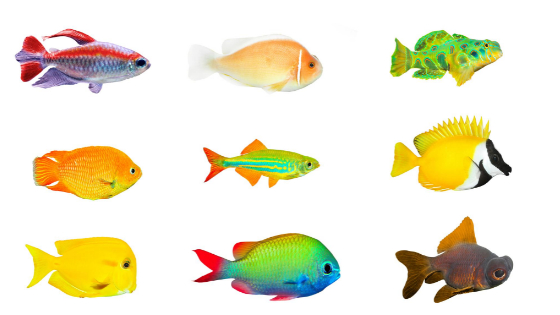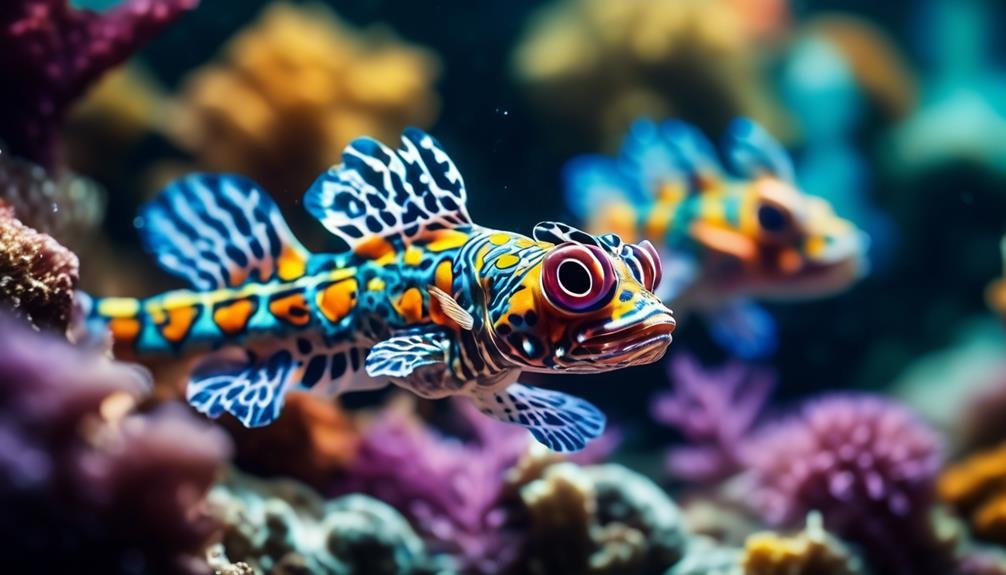
Immerse yourself in the captivating world of exquisite dragonets, where vibrant colors and intricate patterns dance in the depths of the sea. These alluring gems of the ocean are a sight to behold, with their long, scale-less bodies shimmering like precious jewels.
But there’s more to these enchanting creatures than meets the eye. From their origins in the tropical regions of the Indo-Pacific Ocean to the challenges of feeding and breeding them, there’s a wealth of knowledge waiting to be discovered.
So, prepare to be intrigued as we unravel the secrets of these mesmerizing dragonets and explore the wonders they bring to the saltwater aquarium.
Key Takeaways
- Dragonets are a family of small, vibrantly colored saltwater fish, considered one of the most beautiful species.
- They originate from the tropical regions of the Indo-Pacific Ocean and prefer large aquariums with suitable tank mates.
- Feeding dragonets can be challenging as they require live food, particularly copepods, and often starve rather than accepting processed or dried foods.
- Breeding dragonets is possible but requires specific conditions and expertise, as they are not parental species and lay a large amount of eggs that intermingle with plankton.
Origins and Size of Dragonets
Dragonets, originating from the tropical regions of the Indo-Pacific Ocean, are small in size and bear a striking resemblance to gobies. These vibrant and stunning saltwater fish have captivated the hearts of many hobbyists. With their long, scale-less bodies adorned with intricate patterns, dragonets are considered one of the most beautiful species in the ocean.
They prefer the bottom of the aquarium as their swimming region and are often found in large aquariums of 55 gallons or more. However, it’s important to note that dragonets are community aggressive and should be kept with suitable tank mates. Their small size and unique appearance make them a captivating addition to any saltwater aquarium.
Vibrant Colors and Intricate Patterns
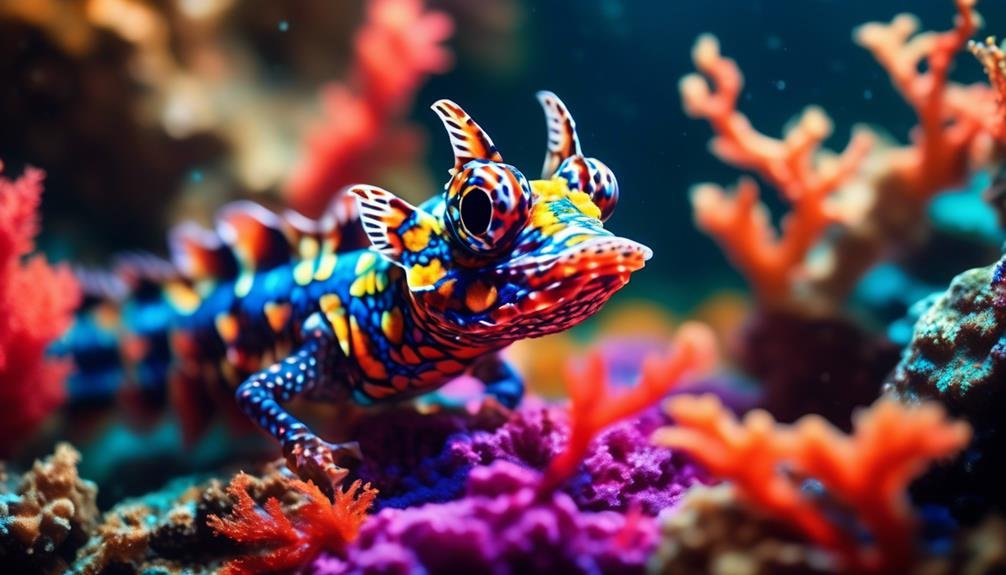
As you continue to explore the captivating world of dragonets, you’ll be mesmerized by their vibrant colors and the intricate patterns that adorn their long, scale-less bodies. These exquisite fish come in a stunning array of hues, ranging from vibrant blues and greens to bold oranges and yellows. Some dragonet species even showcase a mesmerizing iridescent sheen.
The patterns on their bodies are equally as captivating, with intricate lines, spots, and stripes that create a striking visual display. These vibrant colors and intricate patterns not only serve as a means of attraction but also provide camouflage in their natural habitat.
Whether you’re a seasoned aquarist or a casual observer, the vibrant colors and intricate patterns of dragonets are sure to leave you in awe.
Care Requirements for Dragonets
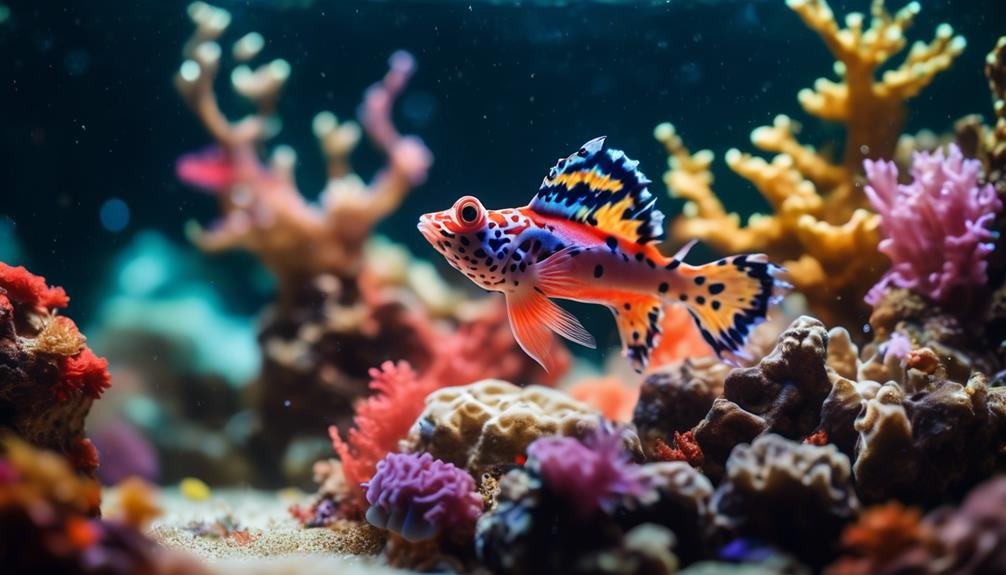
To properly care for dragonets, it’s essential to meet their specific care requirements.
Dragonets require a well-maintained aquarium with suitable tank mates. It’s recommended to have a large aquarium, preferably 55 gallons or more, as they prefer ample swimming space.
Keeping the water parameters stable, such as maintaining a temperature between 75-80°F and a pH level of 8.1-8.4, is crucial for their well-being.
Additionally, dragonets have specific dietary needs. Most species only accept live food, particularly copepods. Providing a steady supply of copepods and live rock for grazing is necessary to prevent starvation. It’s important to note that dragonets can be challenging to feed, as they often refuse processed or dried foods.
Meeting these care requirements will ensure the health and happiness of your dragonets.
Feeding Challenges and Dietary Requirements
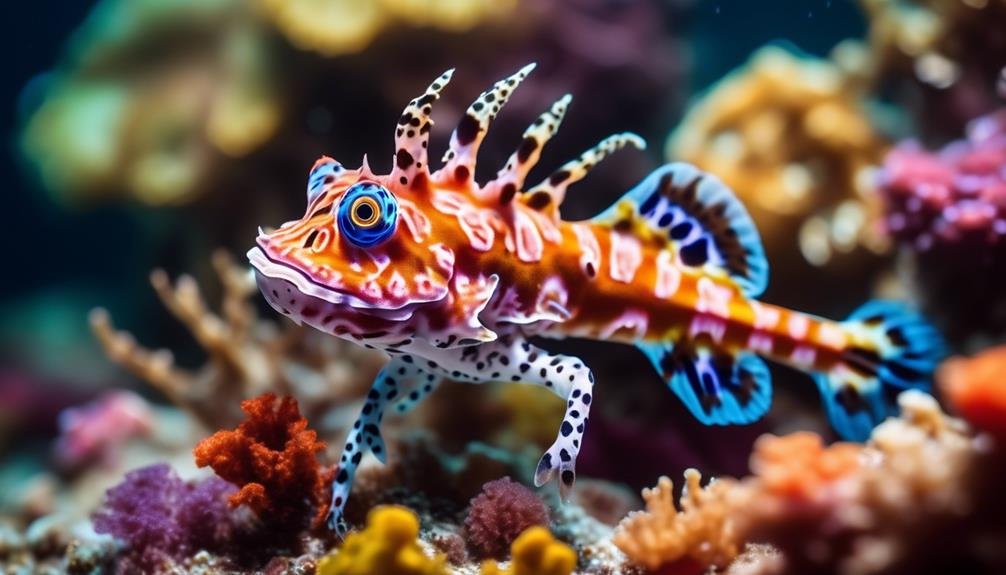
Meeting the dietary requirements of dragonets can be a challenging task for aquarium hobbyists. These beautiful fish have specific feeding challenges and dietary needs that must be met in order to ensure their health and well-being. Here are four important points to consider when it comes to feeding dragonets:
- Live food: Most dragonet species only accept live food. They graze on live rock and require a steady supply of copepods to thrive.
- No processed or dried foods: Dragonets often starve rather than accept processed or dried foods. It’s crucial to provide them with fresh and live food sources.
- Effort and dedication: Feeding dragonets can be challenging and requires a lot of effort. It may involve maintaining a separate copepod culture or sourcing live food regularly.
- Expertise: Keeping dragonets successfully requires expertise in understanding their dietary requirements. It’s important to research and consult with experienced hobbyists or professionals to ensure their dietary needs are met.
Breeding Behavior and Reproduction
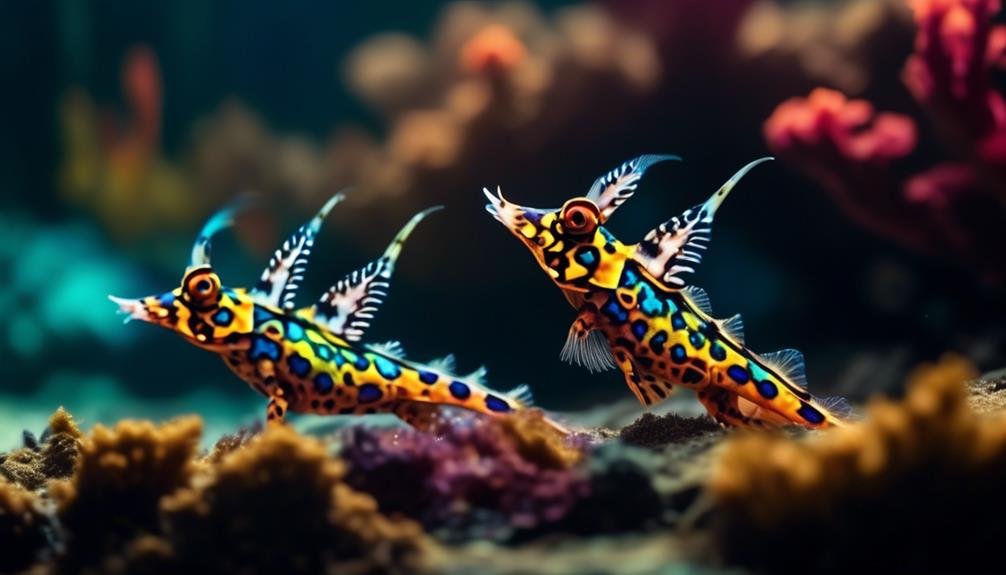
Have you ever wondered about the fascinating breeding behavior and reproduction of dragonets? Dragonets have been successfully bred in captivity, but it requires specific conditions and expertise. During courtship, males engage in a dance, spreading their fins to attract females. Dragonets are not parental species and lay a large amount of eggs, which intermingle with plankton and drift out into the sea. Breeding dragonets can be a challenging endeavor, but with the right knowledge and dedication, it is possible to breed these exquisite creatures.
| Breeding Behavior and Reproduction |
|---|
| – Dragonets engage in courtship dance, spreading their fins |
| – Males attract females through this behavior |
| – Dragonets lay a large amount of eggs |
| – Eggs intermingle with plankton and drift out into the sea |
Captive Breeding Success and Challenges
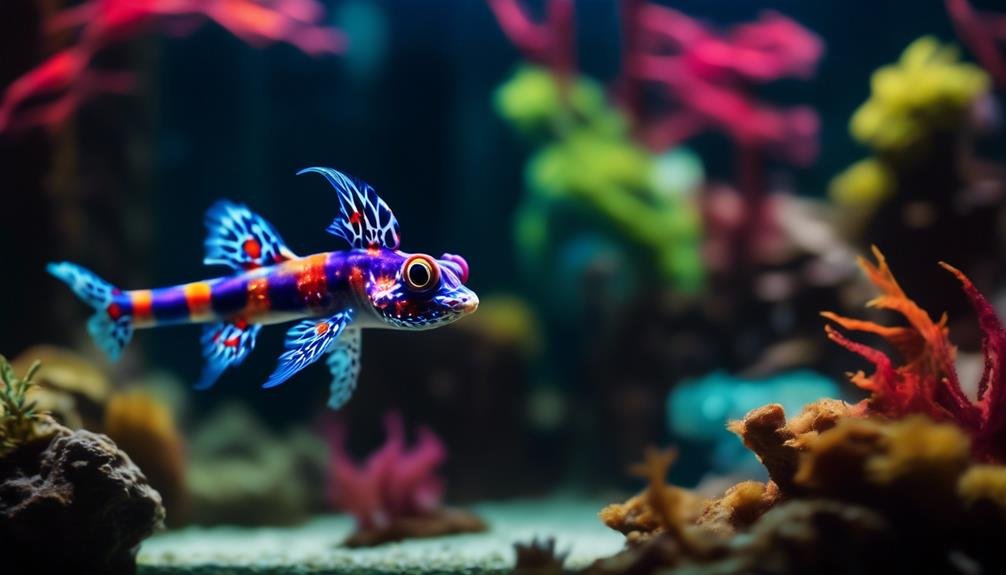
Now let’s explore the challenges and successes of breeding dragonets in captivity.
- Limited availability of captive-bred dragonets: Breeding dragonets in captivity is still a relatively new and challenging endeavor. As a result, there’s a limited supply of captive-bred dragonets in the market.
- Complex breeding requirements: Dragonets have specific breeding requirements, including specific water parameters, suitable tank mates, and specialized diets for the larvae. Meeting these requirements can be demanding and requires expertise and dedication.
- Larval rearing difficulties: Rearing the larvae of dragonets can be extremely challenging. They’ve delicate and sensitive larvae that require constant monitoring and specialized feeding protocols. Providing the right conditions for their survival and growth is a complex process.
- Research and advancements: Despite the challenges, there have been notable successes in captive breeding of dragonets. Ongoing research and advancements in breeding techniques and larval rearing protocols are helping to improve the success rate and availability of captive-bred dragonets in the future.
Dragonets as Unique Saltwater Aquarium Additions
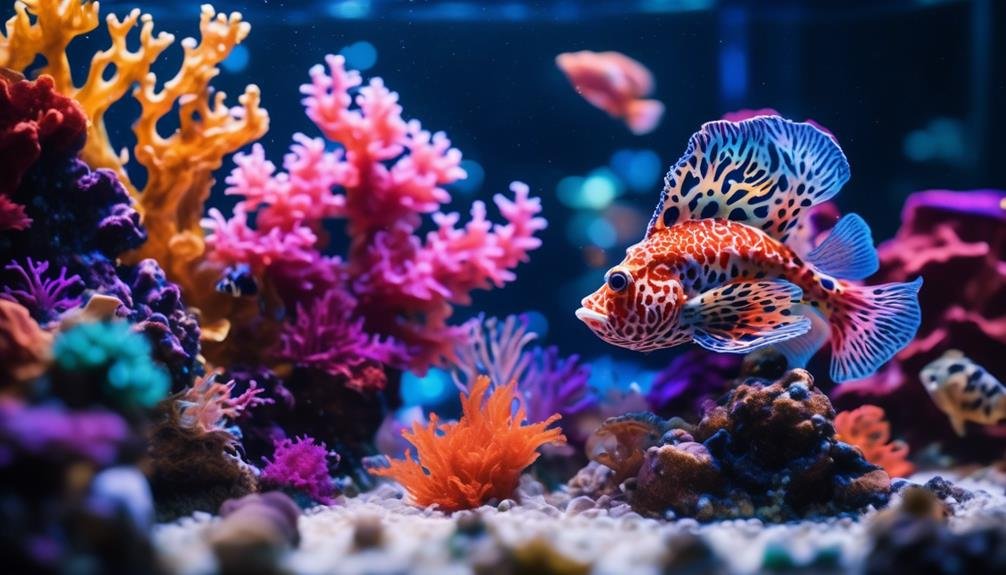
Dragonets make for a stunning and captivating addition to any saltwater aquarium. Their vibrant colors and intricate patterns add a touch of elegance to the underwater landscape. These small, scale-less fish are known for their unique appearance and are considered one of the most beautiful species in the marine world.
However, it’s important to note that dragonets require the care of an experienced hobbyist. They have specific dietary requirements and often only accept live food, making feeding them a challenge. Dragonets also need large aquariums and suitable tank mates to thrive.
Despite these challenges, if you’re dedicated and willing to put in the effort, dragonets can be a rewarding and unique addition to your saltwater aquarium.
Frequently Asked Questions
How Long Do Dragonets Typically Live in Captivity?
Dragonets typically live around 3 to 5 years in captivity. However, with proper care and a suitable environment, they can live longer. Remember to provide the necessary dietary requirements and conditions for their well-being.
Can Dragonets Be Kept in a Reef Tank With Other Coral Species?
Yes, dragonets can be kept in a reef tank with other coral species. However, it’s important to choose suitable tank mates and provide the right conditions for both the dragonets and the corals to thrive.
Are There Any Specific Water Parameters That Dragonets Require?
Yes, specific water parameters are crucial for dragonets. They require stable water conditions with a temperature range of 75-82°F, pH level between 8.1-8.4, and salinity of 1.020-1.025. Regular monitoring is essential for their well-being.
What Is the Average Size of a Dragonet When Fully Grown?
When fully grown, dragonets are small in size, similar to gobies. They prefer large aquariums and have a small swimming region. Keep in mind that dragonets require specific conditions and expertise for breeding.
Are Dragonets Prone to Any Specific Diseases or Health Issues?
Dragonets are not prone to any specific diseases or health issues, but like any fish, they can be susceptible to common ailments such as parasites or bacterial infections. Regular monitoring and proper care can help prevent and treat these issues.
Are Dragonets and Jawfish Compatible in the Same Aquarium?
Dragonets and Jawfish are compatible in the same aquarium as they both inhabit different areas of the tank, reducing competition. The dazzling jawfish species adds underwater beauty and variety to the environment, while dragonets are known for their peaceful nature, making them suitable tank mates.
Conclusion
In conclusion, caring for dragonets requires dedication and expertise due to their specific needs and challenges. These vibrant and intricately patterned fish add a unique touch to any saltwater aquarium, but their care demands the commitment of an experienced hobbyist.
From providing suitable tank mates to addressing their specific dietary requirements, dragonets require careful attention. Breeding them in captivity is possible, but it requires specific conditions and knowledge.
So, embrace the journey and enjoy the mesmerizing allure of these exquisite gems of the sea.




